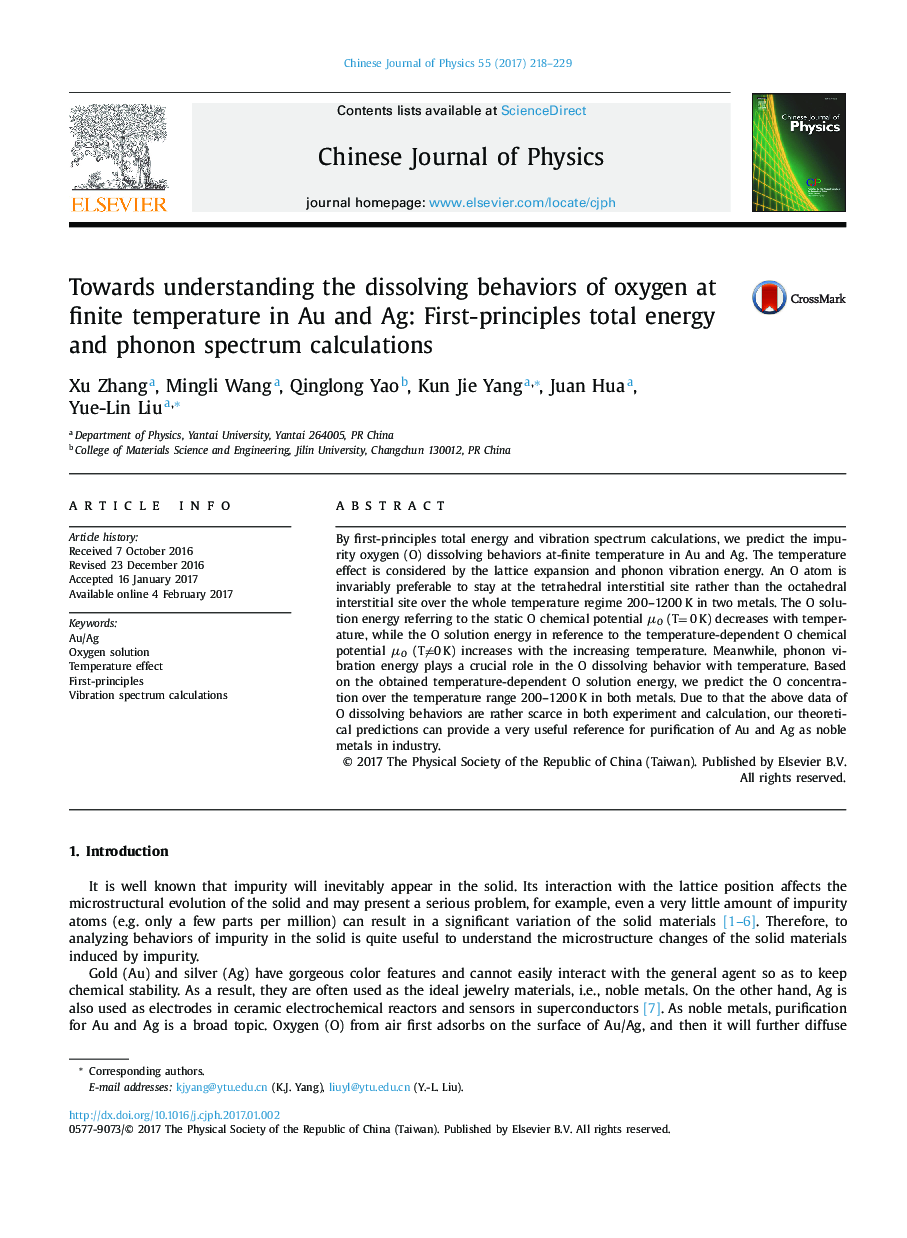| Article ID | Journal | Published Year | Pages | File Type |
|---|---|---|---|---|
| 5488161 | Chinese Journal of Physics | 2017 | 12 Pages |
Abstract
By first-principles total energy and vibration spectrum calculations, we predict the impurity oxygen (O) dissolving behaviors at-finite temperature in Au and Ag. The temperature effect is considered by the lattice expansion and phonon vibration energy. An O atom is invariably preferable to stay at the tetrahedral interstitial site rather than the octahedral interstitial site over the whole temperature regime 200-1200 K in two metals. The O solution energy referring to the static O chemical potential μO (T=â0 K) decreases with temperature, while the O solution energy in reference to the temperature-dependent O chemical potential μO (Tâ 0 K) increases with the increasing temperature. Meanwhile, phonon vibration energy plays a crucial role in the O dissolving behavior with temperature. Based on the obtained temperature-dependent O solution energy, we predict the O concentration over the temperature range 200-1200 K in both metals. Due to that the above data of O dissolving behaviors are rather scarce in both experiment and calculation, our theoretical predictions can provide a very useful reference for purification of Au and Ag as noble metals in industry.
Keywords
Related Topics
Physical Sciences and Engineering
Physics and Astronomy
Atomic and Molecular Physics, and Optics
Authors
Xu Zhang, Mingli Wang, Qinglong Yao, Kun Jie Yang, Juan Hua, Yue-Lin Liu,
